German anti-aircraft small-caliber anti-Soviet aircraft (part of 7)
All this fully applied to the 37 mm anti-aircraft gun 3,7 cm Flak 18 (German 3,7 cm Flugzeugabwehrkanone 18) created by specialists of the Rheinmetall Borsig AG concern in 1929 based on the development of Solothurn Waffenfabrik AG. The 37 mm assault rifle was designed to deal with aircraft flying at altitudes up to 4000 m. Due to the high initial velocity of the armor-piercing projectile, this gun was tanks with protivosnaryadnym reservation could hit any armored vehicles.
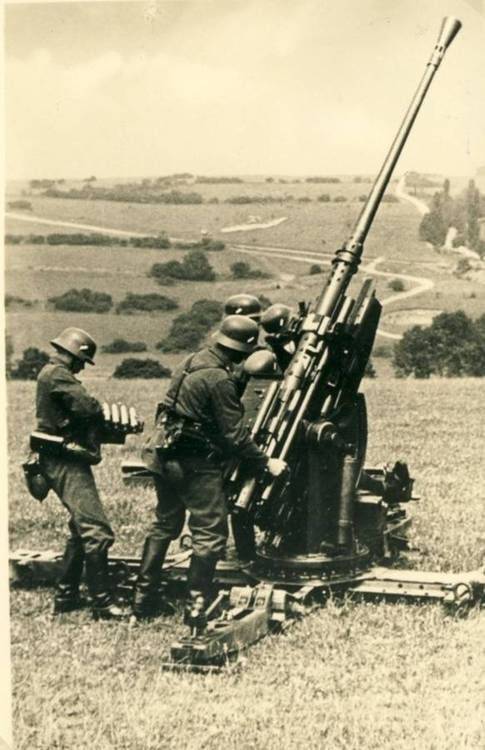
Automatic guns worked by the recoil energy during the short course of the barrel. The shooting was carried out from the thumb carriage, leaning with the help of a cruciform base on the ground. In the stowed position, the gun was transported on a four-wheeled carriage. The designers paid great attention to the ease of maintenance and maintainability of the anti-aircraft gun. In particular, it was widely used threadless connections.
37-mm anti-aircraft gun 3,7 cm Flak 18 after a long military tests officially entered service in 1935 year. For firing 37-mm anti-aircraft guns, a unitary shot known as 37x263B was used, which, in combination with the barrel length 2106 mm, depending on the type and mass of the projectile, accelerated it to 800 - 860 m / s. Cartridge weight - 1,51-1,57 kg. The armor-piercing tracer with 680 mass was accelerated to 800 m / s. The thickness of the armor pierced by the armor-piercing-tracer projectile at a distance of 800 m at an angle of 60 ° was 25 mm. The ammunition also included shots: with fragmentation tracer, fragmentation incendiary and fragmentation incendiary tracer grenades, an armor-piercing high-explosive projectile, as well as a snapping armor-piercing projectile with a hard-alloy core.
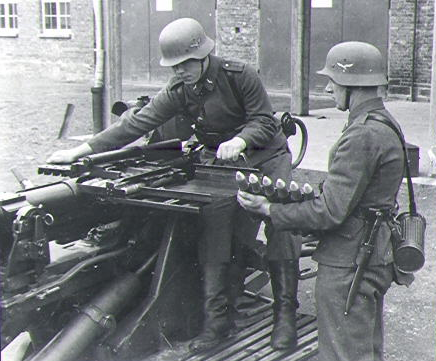
Power was supplied from the 6 charging clips on the left side of the receiver. Firing rate - up to 150 rds / min. The mass of the gun in the combat position 1760 kg, in the marching - 3560 kg. Calculation - 7 people. Vertical guidance angles: -7 ° to + 80 °. In the horizontal plane there was the possibility of a circular attack. Guidance 2-speed drives. The maximum range of fire on air targets - 4200 m.
In general, the 37-mm anti-aircraft gun was quite efficient and quite effective against aircraft at a distance of up to 2000 m, and could successfully operate on lightly armored ground targets and manpower in the aisles of direct visibility.
The baptism of 3,7 cm Flak 18 took place in Spain, where the weapon itself was generally well shown. However, there were a lot of complaints about excessive mass in the transport position, which was caused by a heavy and uncomfortable four-wheel “cart”. Despite the fact that by the beginning of the Second World War, this 37-mm anti-aircraft gun was replaced in the production of more advanced models, its operation continued until the end of hostilities.
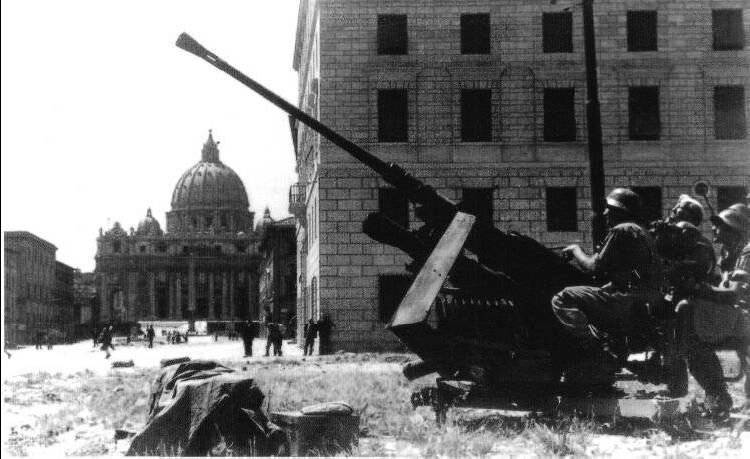
Already in 1936, using the artillery part of the 3,7 cm Flak 18 and the new gun carriage, the 3,7 anti-aircraft gun Flak 36 was created. The weight of the system in the combat position was reduced to 1550 kg, and in the marching position - to 2400 kg. While maintaining the ballistic characteristics and rate of fire of the previous modification, the angles of vertical pickup were increased from -8 to + 85 °.
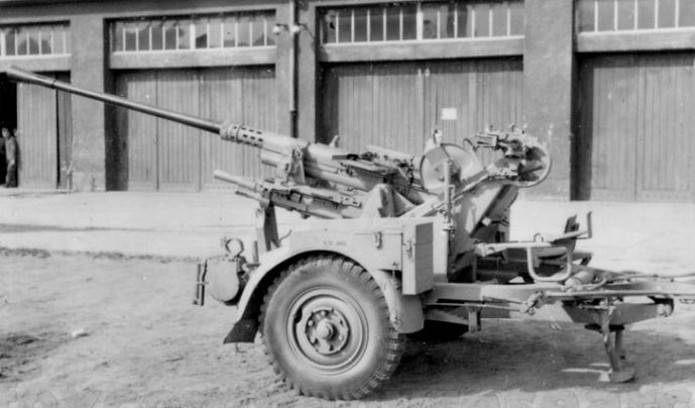
Such a significant weight loss was achieved mainly due to the transition to a new four-carriage with a detachable two-wheeled suspension motion. It was transported at speeds up to 50 km / h. Installation of the gun on the wagon and removal from it was carried out using a chain winch. Ballistic characteristics and rate of guns remained at the same level.
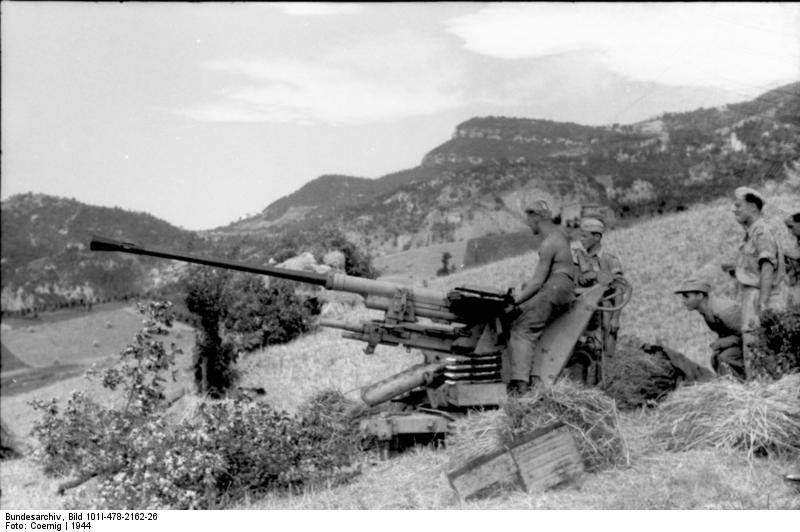
37-mm anti-aircraft gun 3,7 cm Flak 37 in firing position in the north of Italy, 1944 year
In the next 3,7 modification, the Flak 37 introduced the Sonderhänger 52 advanced anti-aircraft sight with a counter-resolver. Fire control of the anti-aircraft battery was carried out using the Flakvisier 40 rangefinder. Due to this, it was possible to significantly improve the effectiveness of shooting at distances close to the limit. From the earlier models, X-NUMX Flak 3,7 in the combat position can be distinguished by the modified barrel casing, which is associated with the simplification of production technology.
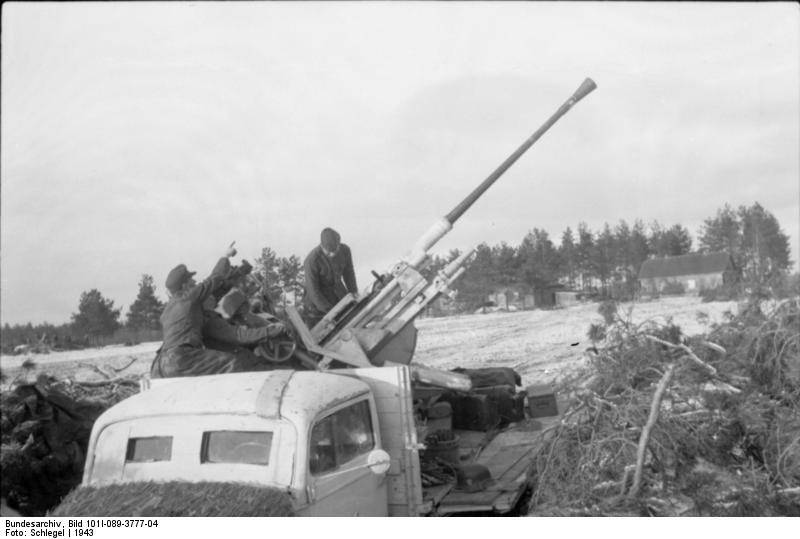
In addition to the standard 3,7 gun carriages, the Flak 18 and Flak 36 anti-aircraft guns were installed on railway platforms, various trucks and armored personnel carriers. In 1940, the production of self-propelled self-propelled guns began on the chassis of the 5-ton semi-tracked tractor Sd.Kfz.6, designated as Sd.Kfz.6 / 2.
An unarmored ZSU weighing 10,4 tons was armed with a Flak 36 cannon, and its calculation consisted of 5 people. A total of 339 self-propelled guns were transferred to the Wehrmacht. However, in the conditions of the Eastern Front, unarmored self-propelled guns suffered heavy losses. This was especially true when repulsing low-altitude Soviet bombing and assault strikes aviation and in the case of fire support to ground units.
In 1942, on the basis of the 8-ton semi-tracked tractor SdKfz 7 was created ZSU, adopted under the symbol Sd.Kfz.7 / 2. This self-propelled unit weighed 11,05 t, and was armed with an 37-mm Flak 36 cannon. Based on the experience of combat use, self-propelled self-propelled gun received light armor protection of the engine and driver's cab. Until January, 1945 was built more than 900 such self-propelled guns, most of them fought on the Eastern Front.
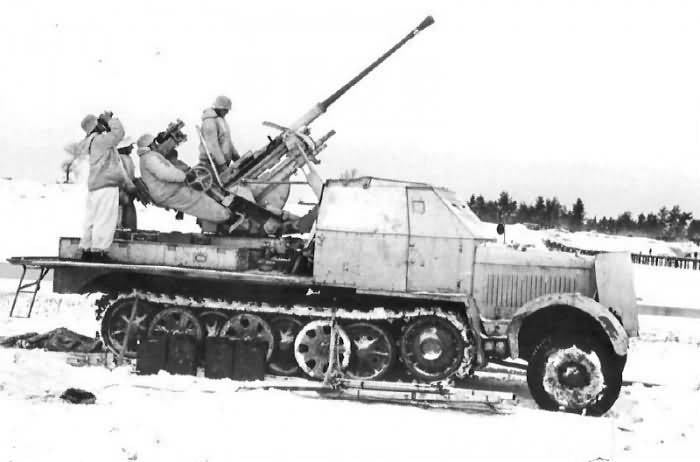
Unlike towed 37-mm anti-aircraft guns deployed in prepared firing positions in the battery, the calculation of anti-aircraft self-propelled guns at firing at air targets, due to more constrained conditions, as a rule, did not use an optical rangefinder, which adversely affected the accuracy of fire. In this case, amendments to the sight were made in the course of the shooting, based on the trajectory of the tracer shells relative to the target.
ZSU with 37-mm anti-aircraft guns on the chassis of semi-tracked conveyors were actively used on the Eastern Front, operating mainly in the front-line zone. They were involved in escorting convoys and were part of the anti-aircraft division that provided air defense for some tank and motorized (panzergrenadera) divisions. In comparison with anti-aircraft self-propelled guns armed with 20-mm and 30-mm machine guns (especially with quadruple guns), the 37-mm guns had a lower combat rate of fire. But much heavier and more powerful 37-mm shells made it possible to deal with air targets flying at a range and height inaccessible to smaller-caliber anti-aircraft guns. At similar initial speeds of 37-mm, the projectile weighed one and a half to two times more than 30-mm (640 - 680 g. Against 330 - 500 g.), Which ultimately determined a significant superiority in muzzle energy (215 kJ against 140) .
The experience of combat use demonstrated that the Sd.Kfz.7 / 2 partially armored anti-aircraft self-propelled gun proved to be more adapted to the realities of the Eastern Front than the 20-mm ZSU on a tank and semi-tracked chassis. The 37-mm high-explosive projectile with 640 mass, containing 96 grams of TNT mixed with pentrite, caused critical damage to the IL-2 and IL-10 attack aircraft. The best reach in height allowed the use of 37-mm ZSU and against medium-high targets in the interests of air defense of various kinds of land-based stationary objects. In addition, in the event of a breakthrough of Soviet tanks 37-mm self-propelled guns often played the role of a mobile anti-tank reserve. At a distance of 500 m armor-piercing shells could confidently overcome the protection of light and medium tanks. In the case of targeted use against armored vehicles, an 37-mm anti-aircraft guns could be equipped with a sabot 405 g, with a tungsten carbide core and an initial speed of 1140 m / s. At a distance of 600 m, normal, he punched 90 mm armor. But due to the chronic shortage of tungsten, 37-mm sub-caliber shells were not used often. In addition, the occasional use of the ZdU Sd.Kfz.7 / 2 against Soviet tanks was a strictly necessary measure.
The calculation of the 37-mm self-propelled guns was partially covered only by the 8-mm splinter shield, and the thin armor of the cab and the engine compartment protected the rifle caliber bullets from the distance of no less than 300 m. just from ambush.
In general, the 3,7 сm Flak 36 and 3,7 сm Flak 37 machines met the requirements for 37-mm anti-aircraft guns. However, when firing at rapidly moving air targets, it was highly desirable to increase the combat rate of fire. In 1943, the 37-mm towed anti-aircraft gun 3,7 with the Flak 43 created by the Rheinmetall Borsig AG concern entered service. The angle of the vertical guidance of the barrel was brought to 90 °, and the principle of operation of the artillery part automation has undergone significant processing. The short stroke of the barrel during recoil, combined with the vapor mechanism, unlocking the valve. Due to this, it was possible to combine several operations and reduce the time required to perform all actions in the production of a shot.
Simultaneously with an increase in the rate of fire to 250 rds / min, due to the introduction of an effective spring-hydraulic damper, it was possible to reduce recoil and shock loads on the frame of the gun. Due to this, the weight of the gun in the combat position was 1300 kg, in the transport position - about 2000 kg. To increase the practical rate of fire to 100 shots / min and the length of a continuous line, the number of shots in the holder was increased to 8 units. The weight of the clip with 8 shots is about 15 kg.
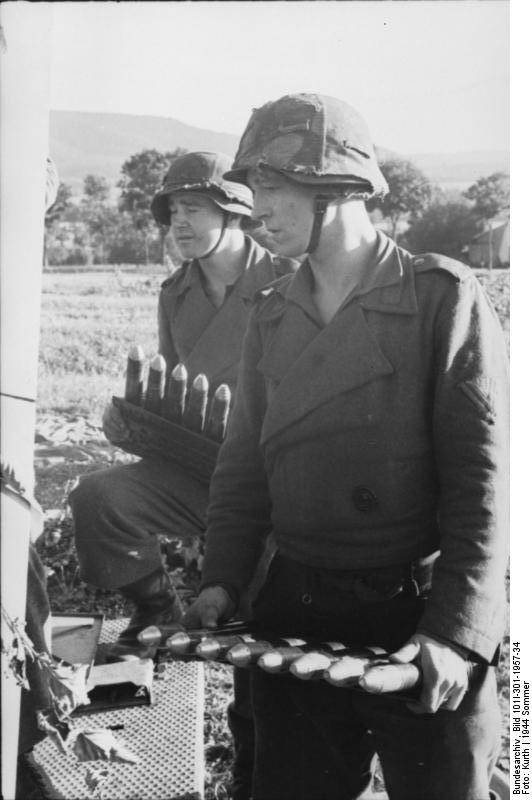
The length of the barrel, ammunition and ballistics Flak 43 compared with the Flak 36 remained unchanged. The gun was transported on a uniaxial podressorenny trailer, with pneumatic and manual brakes, as well as a winch for lowering and raising the gun when translating it from a traveling position to a combat position and back. In exceptional cases, firing from a wagon was allowed, and the sector of horizontal shelling did not exceed 30 °. The artillery part of the Flak 43 was mounted on a triangular base with three beds on which it rotated. Beds had jacks for leveling anti-aircraft installation. Lifting gear sector, with a single pickup speed. The turning mechanism had two speeds of aiming. The swinging part was balanced by a balancing mechanism with a spiral spring.
Taking into account the experience of fighting, the new anti-aircraft gun had a steel shield with two folding side flaps, which reduced the vulnerability of the calculation when repelling air attacks and shelling from the ground. In order to increase the effectiveness of anti-aircraft fire, a tip from a single anti-aircraft fire control device was adopted as the main one. At the same time, for use outside the anti-aircraft battery on the 3,7 сm Flak 43 individual scopes were saved. In the Wehrmacht, towed antiaircraft 3,7 with m Flak 43 boiled down into batteries on 9 guns. In the anti-aircraft battery, the Luftwaffe placed in stationary positions could be up to 12 37-mm guns.
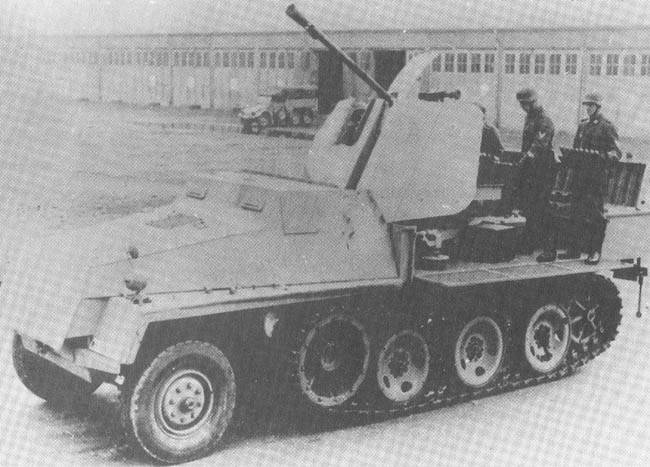
As in the case of other 20-37-mm rapid-fire anti-aircraft guns, 3,7 cm Flak 43 was used to create a ZSU. Initially, the new 37-mm anti-aircraft gun tried to mount on the chassis of the half-track BTR SdKfz 251. However, the troop compartment of the armored personnel carrier was too close to accommodate a fairly massive anti-aircraft gun, calculation and ammunition. In this regard, the specialists of Friedrich Krupp AG have already gone the beaten path, creating the 37-mm version of the Furniture Car. By analogy with the quad 20-mm ZSU on the tank chassis, for the manufacture of 37-mm anti-aircraft self-propelled guns used restored tanks Pz. Kpfw IV modifications H and J with the dismantled tower.
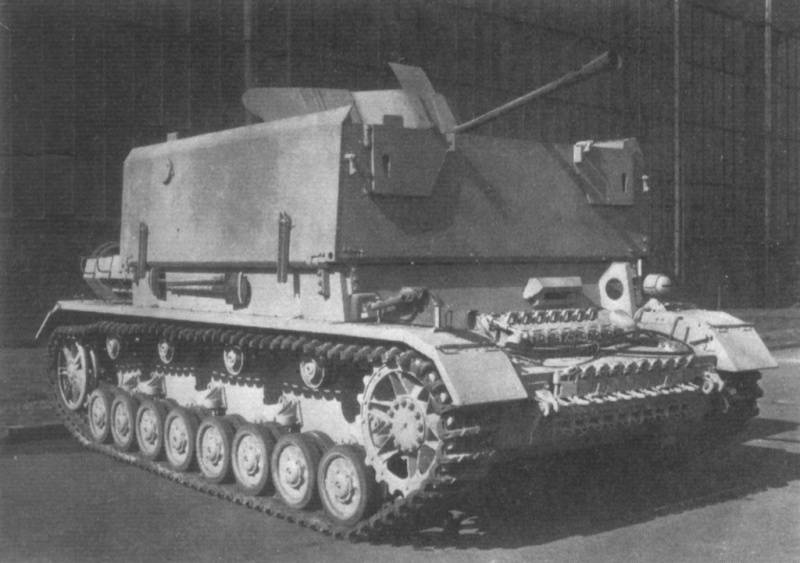
3,7 self-propelled self-propelled unit cm FlaK 43 auf Pz.Kpfw. IV in the stowed position
A box of 20-mm armor plates was assembled around the anti-aircraft machine gun in a transport position, which could protect the weapon and the calculation from bullets and light shards. Sometimes, in order to preserve the ability to fire from the marching position, a notch was made in the front sheet. When conducting anti-aircraft fire armor plates reclined, forming a flat platform. ZSU mass in the combat position was within 25 t, mobility at the level of the base chassis. The crew of the car consisted of six people. Although the original self-propelled gun was called the Flakpanzerkampfwagen IV (it’s literally the Battle Anti-Aircraft Tank IV), the name Möbelwagen (German Furniture Car) stuck to it more.
The first 37-mm ZSU on the medium tank chassis were sent to the troops in March 1944 of the year. By August 1944, self-propelled 3,7 cm FlaK 43 auf Pz.Kpfw. IV Möbelwagen were equipped with separate anti-aircraft divisions (8 vehicles) of three tank divisions on the Western Front and two tank divisions on the Eastern Front.
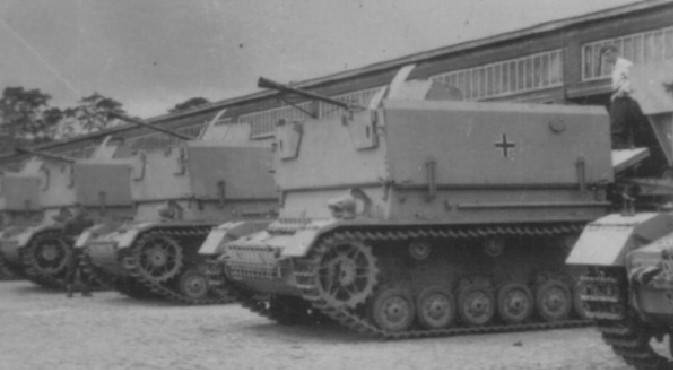
In the future, a number of tank brigades were completed with anti-aircraft divisions of mixed composition, which included 4 ZSU with 37-mm anti-aircraft guns and 4 ZSU with 20-mm machine guns. The exact number of built “Furniture cars” 37-mm is now impossible to establish. Most sources agree that they released a little more than 205 units.
ZSU 3,7 cm FlaK 43 auf Pz.Kpfw. IV had a number of significant drawbacks. To transfer the installation from the traveling position and back, it was necessary to expand and lift heavy armor plates, which required time and considerable physical effort. At the firing position, the entire calculation of the installation except for the driver was on an open platform and was very vulnerable to bullets and shrapnel. In this connection, it was considered expedient to create an anti-aircraft self-propelled gun with a turret. Since the gunner had to be able to independently detect air targets, and when firing an 37-mm machine gun, a large amount of powder gases got into the fighting compartment, along with the spent cartridges, the tower had to be made open from the top.
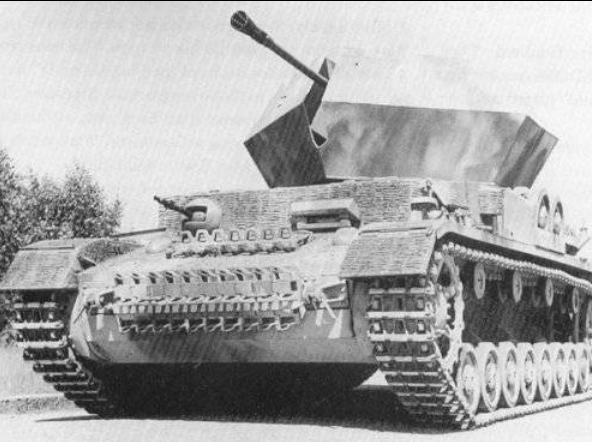
In July, 1944, the company Ostbau Werke released the first prototype ZSU with the 37-mm anti-aircraft gun FlaK 43 installed in a rotating turret on the chassis of the Pz.Kpfw IV tank. The thickness of the armor hex tower was 25 mm. The tower housed the 37-mm automatic flak43 anti-aircraft gun, aiming devices, combat crews and 80 shells in cassettes. The rest of the ammunition in the number of 920 shots was in boxed box. The calculation for ZSU consisted of 5 people.
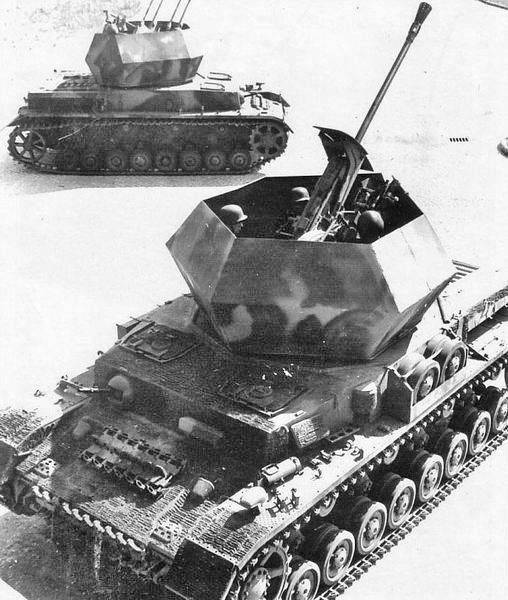
ZSU received the designation 3,7 cm Flak 43 auf Sfl Pz.Kpfw IV later became more known as the Flakpanzer IV "Ostwind" (it. Anti-aircraft tank IV "East Wind"). Compared with tanks Pz. Kpfw IV produced at this time in series, security zenith self-propelled gun was less. The creators of the ZSU quite reasonably considered it superfluous to install anti-cumulative screens on it, since it should not have acted in the first line of battle formations. In August, 1944 was commissioned to manufacture 100 machines. The Flakpanzer IV “Ostwind” series production was established at the Deutsche Eisenwerke factory in Duisburg, but before the collapse of Nazi Germany, it was possible to hand over no more than 50 self-propelled anti-aircraft guns.
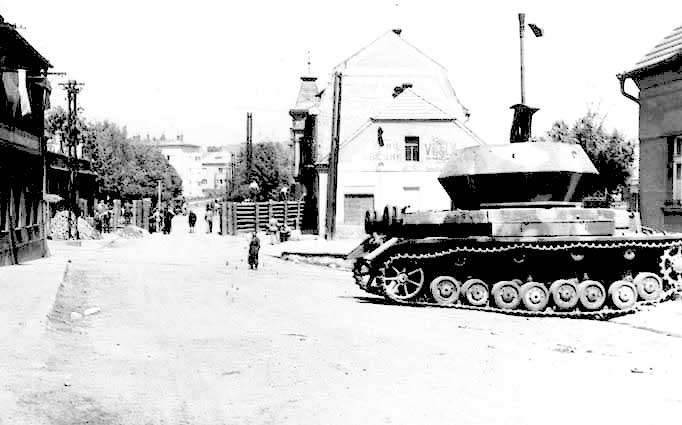
As in the case of other ZSUs based on the Pz.Kpfw IV, tanks that were mainly restored after combat damage were used as a base. There were also plans to create an 37-mm ZSU on the chassis of the outdated Pz.Kpfw.III and Pz.Kpfw.38 (t) tanks, but this never came to the practical realization of these projects. In fairness, it should be said that the German anti-aircraft tank Flakpanzer IV “Ostwind was the best in its class and during the war had no serial analogues in other countries.
The twin 37-mm anti-aircraft gun received the designation Flakzwilling 43 (German Gemini 43). The artillery guns were located one above the other, and the cradles on which the guns were installed were connected to each other by a parallelogram articulation. Each machine was located in its cradle and formed a swinging part, rotating relative to its annular axles.
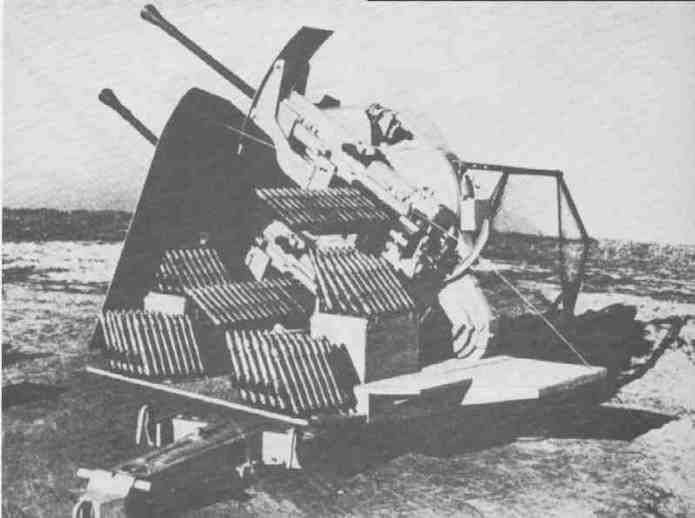
With a vertical arrangement of automata, in the case of a shot from one barrel, there was no dynamic torque in the horizontal plane, which knocks down the tip. Due to the individual pins for each submachine gun, disturbances affecting the swinging part of the anti-aircraft system were minimized. Such a constructive solution improved the accuracy of fire and the conditions of the weapon's aiming, and in the event of the failure of one gun, it was possible to fire from the second without disrupting the normal process of aiming. It was also possible to use automatic machines from single installations without any alterations.
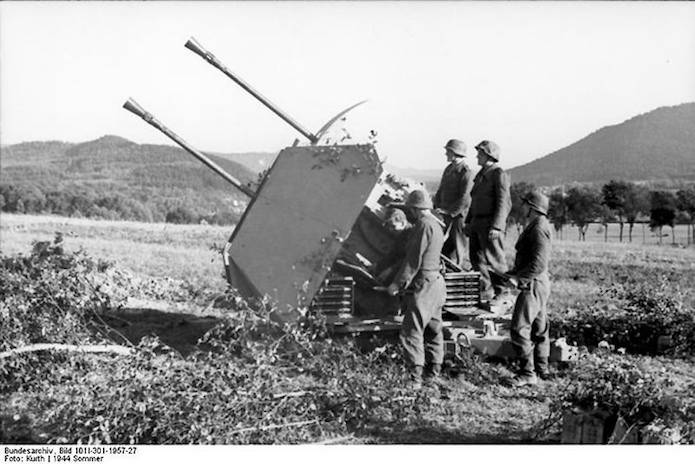
The disadvantages of this scheme are the continuation of the advantages: with a vertical arrangement, the height of the entire anti-aircraft system and the height of the line of fire increased. In addition, this arrangement is possible only for machines with lateral power.
In general, the creation of a paired 37-mm installation justified itself. The mass of Flakzwilling 43 compared to Flak 43 increased by about 40%, and the combat rate of fire increased almost twice.
Work was also carried out on an 37-mm anti-aircraft installation paired in a horizontal plane using the artillery unit of the Flak 43. She planned to install on the ZSU created on the basis of the tank Pz.Kpfw.V "Panther".
The prototype machine that received the designation Flakzwilling 3,7cm auf Panzerkampfwagen Panther was built in 1944 year and had only a mock tower. Due to the overload of the German industry with military orders, this project remained in development.
Until March, 1945, the Wesserhutte and Durrkopp plants produced 5918 37-mm Flak 43 anti-aircraft guns, and 1187 Flakzwilling 43 parks. The 3,7-cm Flak 43 and Flakzwilling 43 anti-aircraft automatic cannons were armed with air defense units, both in the Luftwaffe and in the Wehrmacht, and were widely used at the final stage of World War II. Despite the higher level of combat performance, Flak 43 could not completely force Flak 36 / 37 out of production lines - production of various types of 37-mm anti-aircraft guns was carried out until the end of the war.
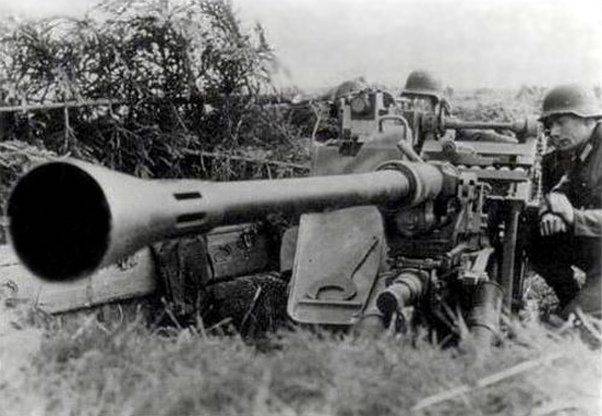
In 1945, much of the available 37-mm anti-aircraft guns were attempted to be adapted for firing at ground targets. Thus, the German command intended to plug gaps in the anti-tank defense, in parallel anti-aircraft guns were to provide anti-aircraft defense of the front edge. Due to low mobility, automatic anti-aircraft guns were used mainly on pre-equipped positions in defense units. Thanks to the armor penetration that is not bad for its caliber and the high rate of fire, they posed a certain danger to the medium Soviet T-34 tanks and light armored vehicles. Their fire was especially disastrous in cities where camouflaged anti-aircraft installations had the opportunity to fire from a minimum distance.
The ending should ...
Based on:
https://military.wikireading.ru/7540http://safe-rgs.ru/4218-37-cm-flak-43-nemeckaya-zenitnaya-avtomaticheskaya-pushka.html
http://drittereich.info/modules.php?name=Forums&file=viewtopic&t=972
http://www.ww2technik.de/sites/dflak/3,7%20cm%20flak%2043.htm
http://www.tanks-encyclopedia.com/ww2-nazi_germany-mobelwagen/
http://ww2history.ru/2826-nemeckie-zenitnye-samokhodnye-ustanovki-vremen.html
http://wwii.space/zenitnyie-orudiya-germaniya/
- Linnik Sergey
- German anti-aircraft small-caliber anti-Soviet aircraft (part of 1)
German anti-aircraft small-caliber anti-Soviet aircraft (part of 2)
German anti-aircraft small-caliber anti-Soviet aircraft (part of 3)
German anti-aircraft small-caliber anti-Soviet aircraft (part of 4)
German anti-aircraft small-caliber anti-Soviet aircraft (part of 5)
German anti-aircraft small-caliber anti-Soviet aircraft (part of 6)
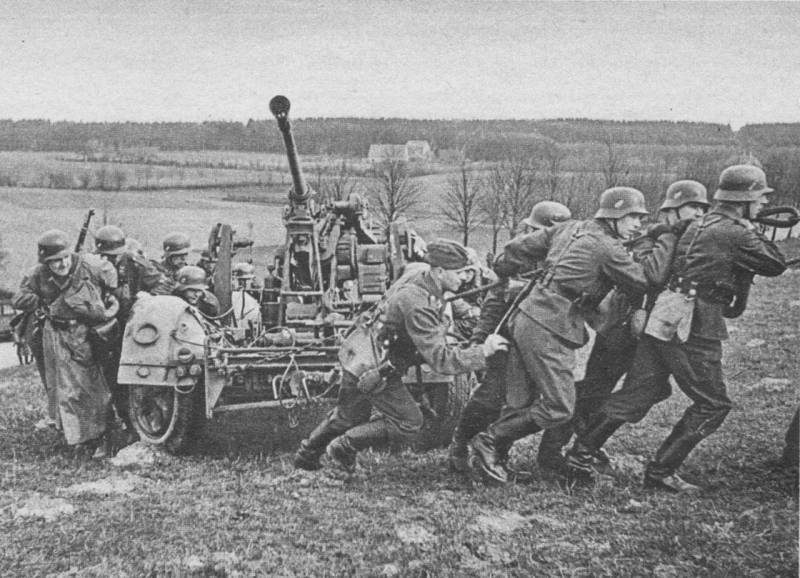
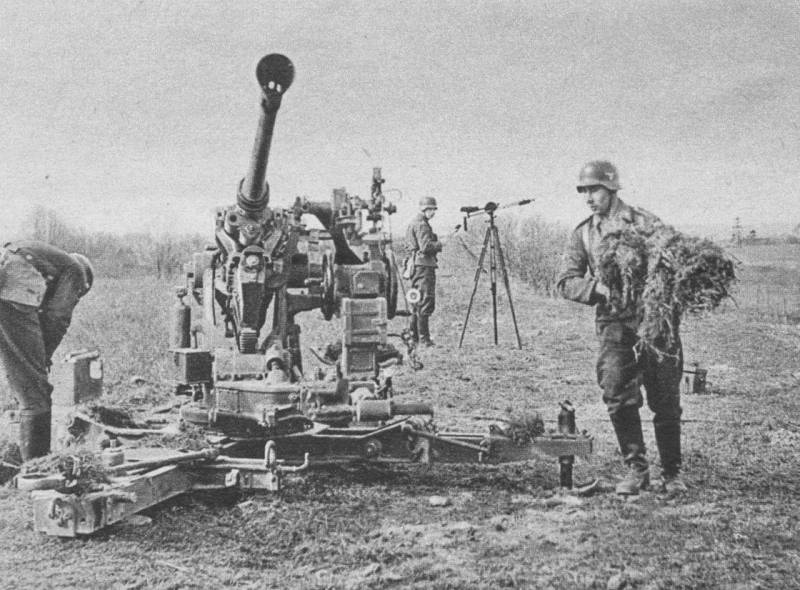
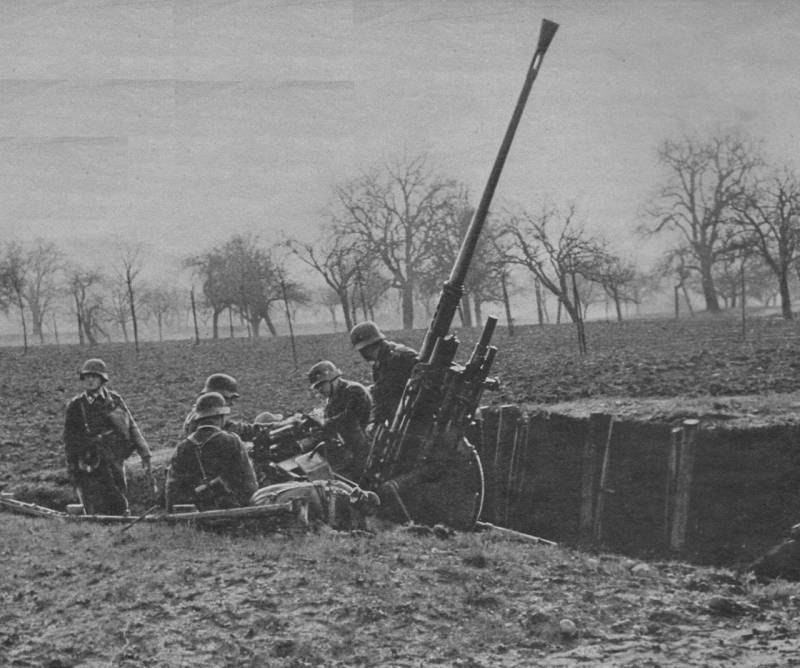
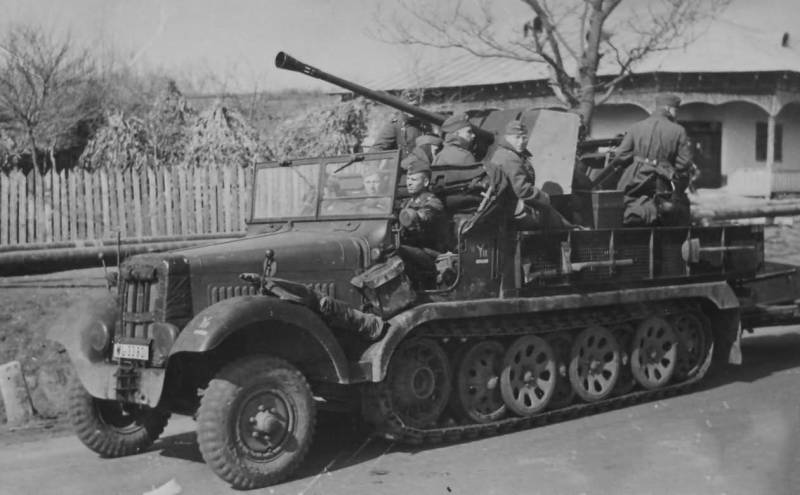
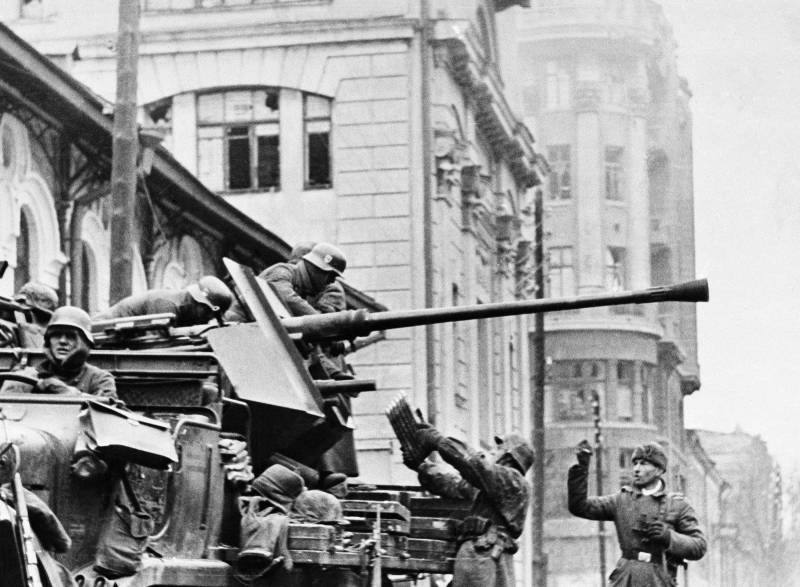
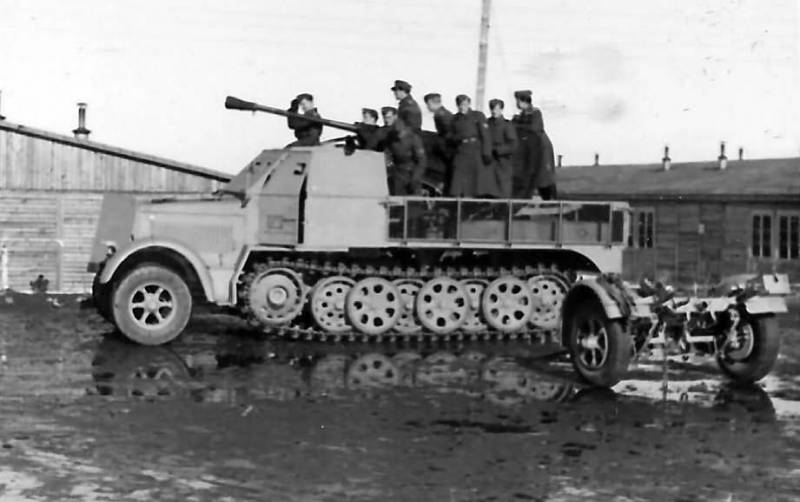
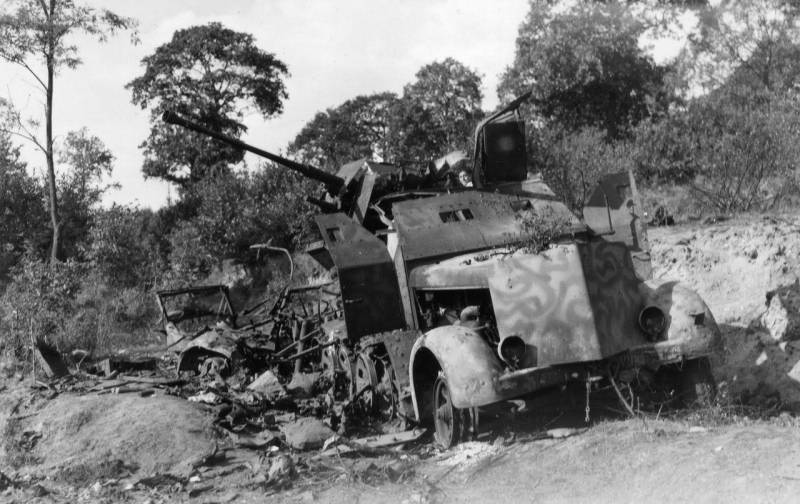
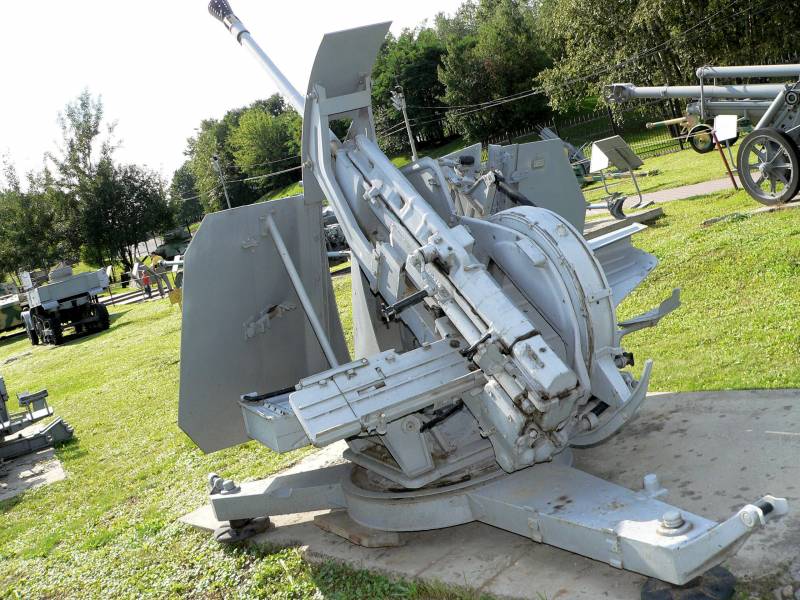
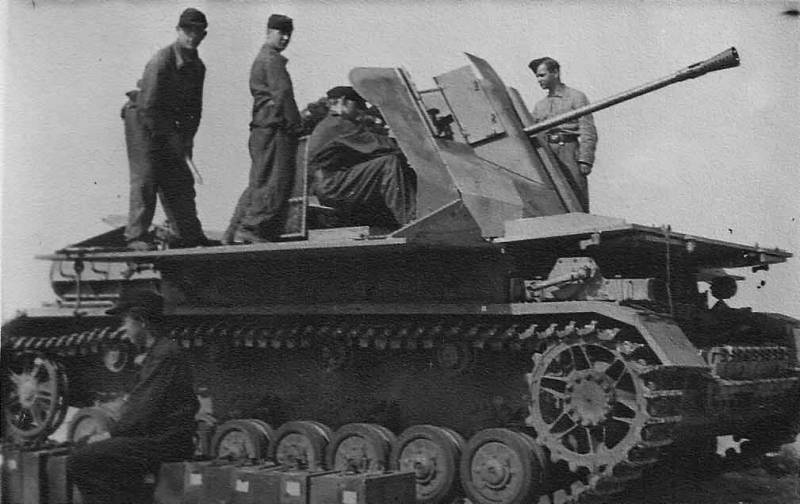
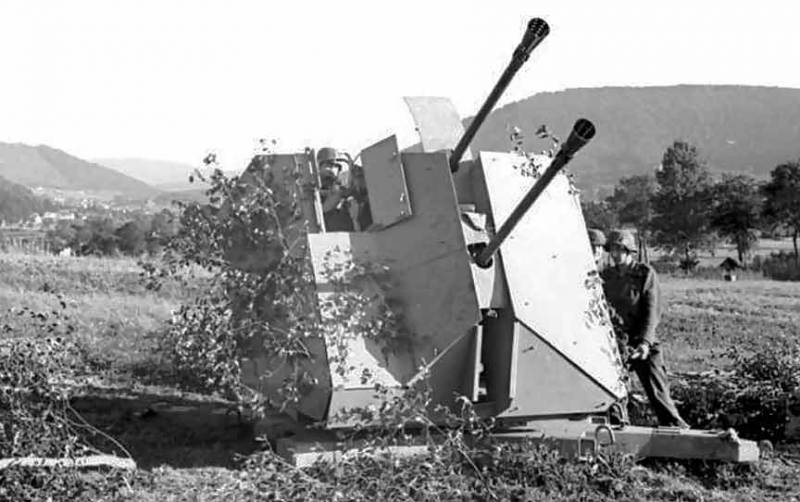
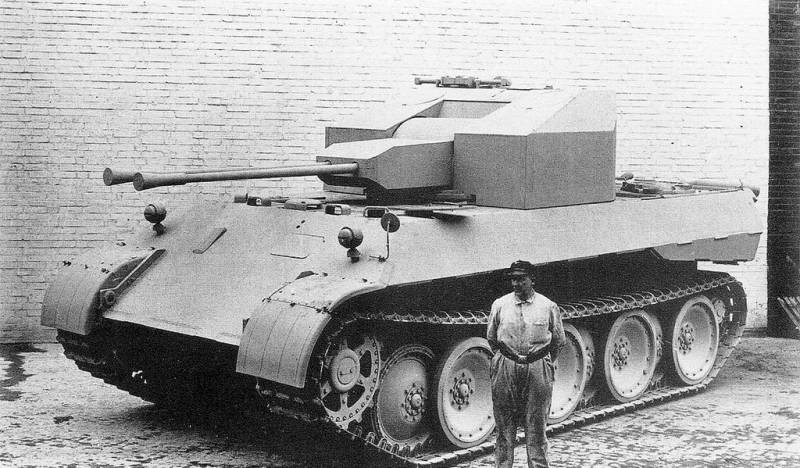
Information